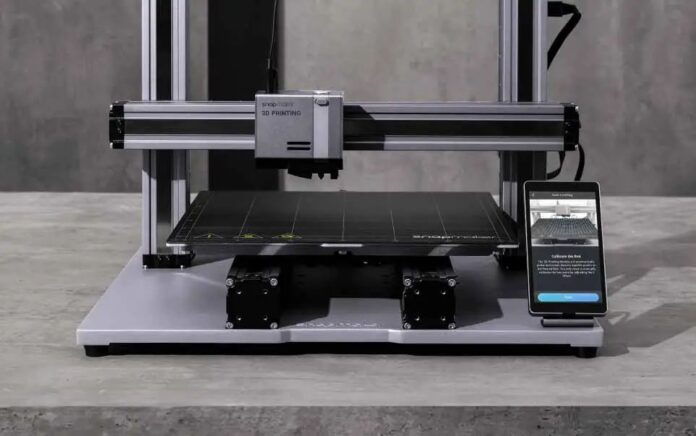Dual extruder 3D printers have grown in popularity, allowing users to print with two different filaments simultaneously. Whether you’re interested in multi-material or multi-color prints, these printers can bring creative ideas to life. However, they come with their unique challenges and maintenance needs. In this guide, we’ll dive into some key tips for using dual extruder printers, from setting up slicing software to managing material compatibility and support structures. We’ll also touch on the best dual extruder 3D printer available to get the most out of this technology.
Understanding Dual Extruder Maintenance Requirements
With dual extruder 3D printers, maintenance becomes doubly important. Each extruder requires calibration, cleaning, and alignment, and you’ll need to repeat this process for two nozzles instead of one. In essence, you’re maintaining two miniature printing machines within one.
- Calibration and Alignment: Dual extruder printers often need precise alignment to ensure each extruder prints accurately in its intended location. Some printers come with automated calibration, but manual adjustments are usually necessary. Ensuring each extruder is aligned is key to avoiding issues like filament overlap or misalignment.
- Cleaning and Lubrication: Just like single extruder machines, dual extruders require regular cleaning. However, dual setups are more prone to nozzle clogs, especially if the filaments have different melting points. Regular cleaning and lubrication will help keep both nozzles running smoothly.
Setting Up Slicing Software for Dual Extrusion Success
Dual extrusion printing also requires a slightly different approach in slicing software. The slicing software must be set up correctly to prevent issues like filament mixing or color bleeding. If you’re new to dual extrusion, this process can take some time to master, but it’s crucial for success.
- Configuring Slicer Software: Most slicer programs, such as Cura and PrusaSlicer, have dual extrusion settings. In these programs, you’ll need to specify which extruder is responsible for each part of your design. This allows you to print with different colors or materials seamlessly.
- Managing Ooze and Dripping: Dual extruders are prone to oozing, which can create defects in your print. To combat this, use features like ooze shields or purge towers in your slicer software. These structures act as barriers, catching any excess filament and preventing it from contaminating the print.
Selecting Compatible Materials for Dual Extrusion
One key advantage of dual extrusion is the ability to combine different materials in a single print. However, not all materials are compatible, so choosing the right ones is essential for a successful print.
- Material Compatibility:
You’ll need to ensure that the filaments used can adhere to each other. For example, PLA works well with PVA, a water-soluble support material, whereas ABS pairs with HIPS for models that require durable, dissolvable supports.
- Best Combinations for Support Structures:
PLA + PVA: Ideal for models needing water-soluble support structures, as PVA dissolves in water, leaving the PLA model intact.
ABS + HIPS: A great combination for robust models needing a dissolvable support, as HIPS dissolves in a limonene solution without affecting the ABS.
- Special Considerations:
Pay attention to the materials’ melting points, as using two filaments with vastly different extrusion temperatures can cause clogs or overheating. The best 3D printer for dual extrusion, like the Snapmaker Artisan, often has preset profiles to guide you in selecting compatible materials.
Working with Support Structures in Dual Extrusion
One of the main uses for dual extruders is to print support structures with a different material. This can be particularly useful for intricate designs or overhangs that would otherwise be difficult to print.
- Soluble Supports for Complex Models: Using soluble filaments like PVA or HIPS allows you to print complex structures without worrying about how to remove the supports. After printing, you can dissolve the support material without damaging the main model.
- Removing Supports Without Damage: Be mindful of your main model’s material when choosing a support filament. For example, if you’re using PVA supports with a PLA model, the PVA will dissolve in water, leaving the PLA structure intact. It’s crucial to use the right solvent to avoid damaging the model.
Ensuring Successful Dual Extrusion Prints
To maximize your success with dual extrusion printing, take these additional steps for a smoother printing experience.
- Aligning Nozzles for Precision:
Proper nozzle alignment is essential in avoiding cross-contamination. Investing in a printer with independent dual extruders (IDEX) can be beneficial, as it allows for greater control over each extruder’s movement.
- Filament Management:
Keep both filaments dry and properly fed into their respective extruders to prevent jams. Filament humidity control systems are also helpful for maintaining the material’s quality and ensuring smooth prints.
- Choosing the Right Printer Settings:
Adjustments in settings such as print speed, retraction, and cooling can enhance your dual extrusion results. Print speed might need to be reduced slightly due to the additional extruder weight, and retraction settings must be calibrated carefully to avoid stringing.
Conclusion
Dual extruder 3D printing opens up a world of creative possibilities. With the ability to combine colors and materials, this technology can produce intricate models and functional parts that would be impossible with single extrusion alone. However, it does come with added complexities, including higher maintenance and the need for material compatibility. By following the tips in this guide and using top-quality dual extruder 3D printers, you can unlock the full potential of dual extrusion technology.
So, whether you’re an enthusiast looking to expand your skills or a professional aiming to create sophisticated prototypes, dual extruder 3D printing is a rewarding endeavor. With the right tools, techniques, and a bit of patience, you’ll be well on your way to creating high-quality, multi-material prints.

